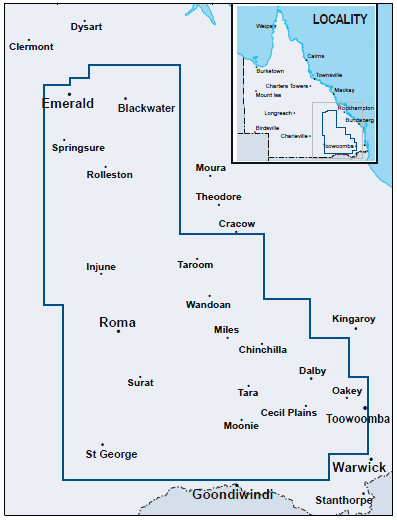A landholder representative group has welcomed the results of a new Government report that predicts the impact of the Coal Seam Gas industry on groundwater reserves in Southern Queensland through to 2065.
The consultation draft of the 2016 Underground Water Impact Report was formally released on March 22 by the Office of Groundwater Assessment {OGIA}.
The report attempts to predict how CSG gas and water extraction activities will impact on ground water reserves relied upon by all other users across the Surat Basin Cumulative Management Area through to 2065.
Basin Sustainability Alliance chairman Lee McNicholl said the 2016 UWIR version contains significantly more data points which should improve the accuracy of the model.
However, making accurate predictions out to 2065 would still require some “heroic assumptions” that rely for accuracy on the ever-changing business plans of the CSG proponents, he said.
“Arguably the best news in the 2016 UWIR for some farmers is that their homes, land and productivity will now be spared due to the industry contracting from 40,000 CSG wells to only 18,000 which will be concentrated in the most profitable areas to exploit,” Mr McNicholl said.
“That is if you can believe the economic crystal ball gazers in the CSG industry.”
How the reduction of 22,000 wells on the industry’s expected size will impact on the total volume of “associated” water pumped from the Great Artesian Basin to allow gas extraction trough to 2065 was still unclear, Mr McNicholl said.
The initial 2012 UWIR predicted a take of 95,000 megalitres/year for 38 years to 2050 for a total extraction of 3600 gigalitres.
On the basis of 18,000 wells, the 2016 UWIR predicts a lower annual take of 70,000 mega litres but for longer to 2065.
This 50 year extraction totals 3500 gigalitres, a similar volume.
The 2016 UWIR identifies a 100 landholder bores in the Immediately Affected Area that will see their water level drop by more than 5 metres over the next three years, with a total of 469 being long term affected.
A new category of E3 lists a further 42 bores that will possibly drop less than 5 metres in three years.
The BSA is encouraging Surat Basin landholders to read the report and attend one of the five consultation meetings from April 11-15, if they are concerned about “make good” on their bores or the long term sustainable use of the GAB.
To read the full 2016 UWIR on the Qld Govt website click here
Source: Basin Sustainability Alliance

